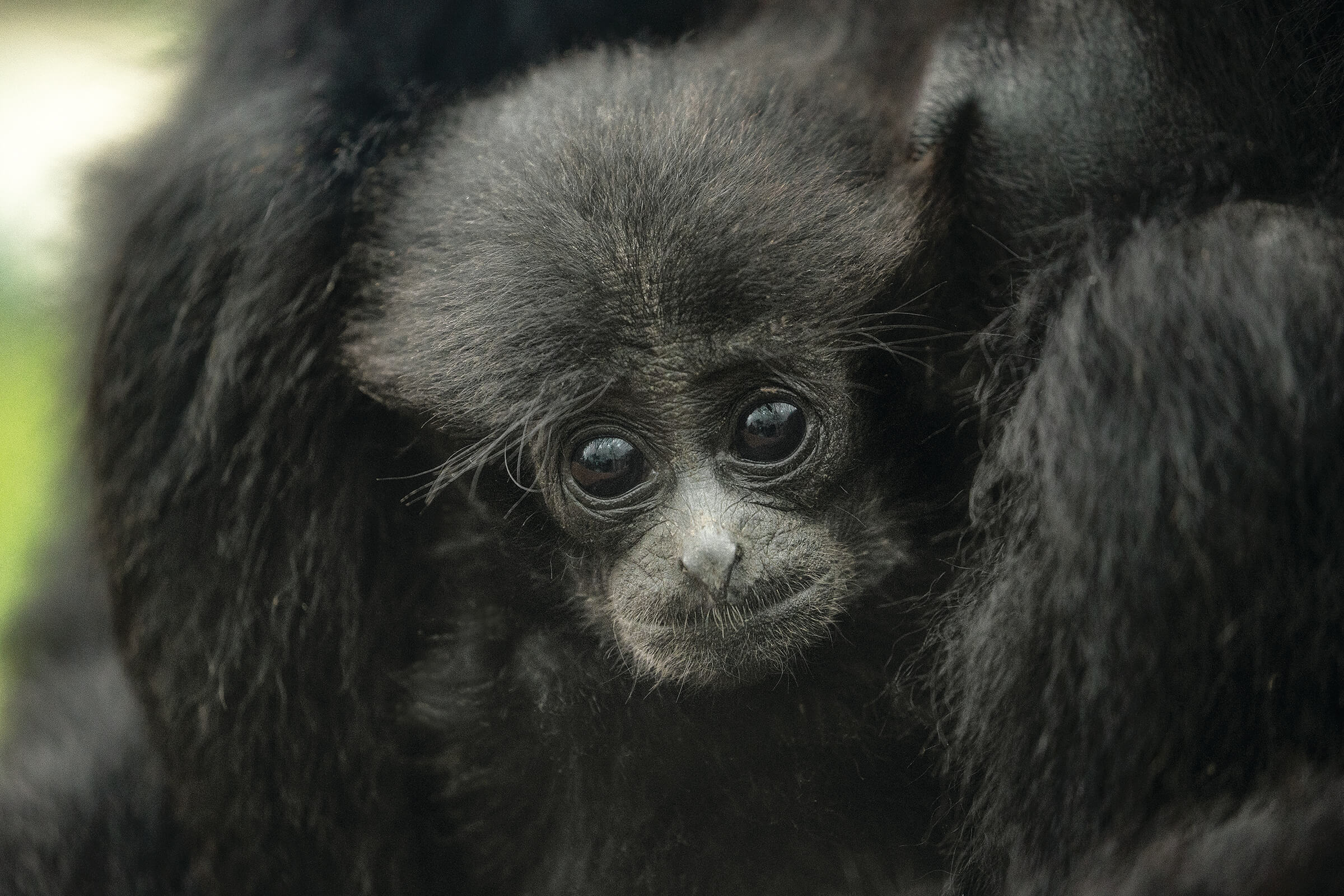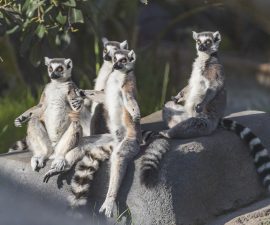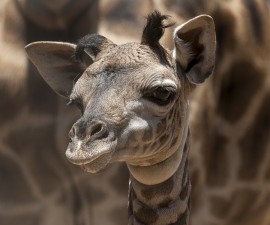When primate keepers at the orangutan and siamang habitat arrived for work on November 12, 2018, they didn’t know that by day’s end, they would have one more charge in their care.
BY Donna Parham
Photography by Tammy Spratt
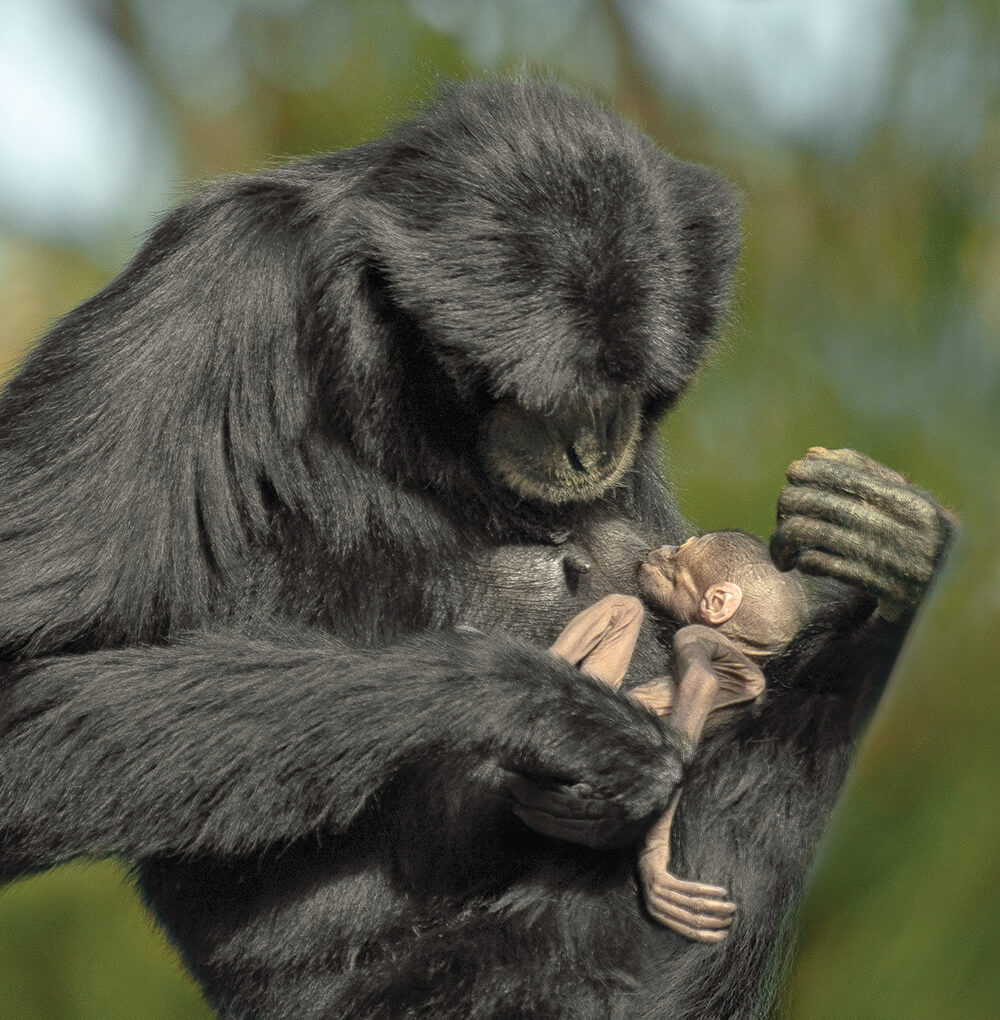
PREEMIE CARE
Ellie cradled her newborn 24 hours a day. Female siamangs give birth to a single—nearly hairless—infant. Sela was born early, and smaller than most.
The Zoo’s siamangs Unkie and Eloise (Ellie for short) had previously made a significant contribution to the population in managed care of this endangered species: they had successfully raised five female offspring over the years. With Ellie on contraception, their reproductive years had come to a close.
Or so the animal care staff thought. Contraception is not 100 percent assured, and that day, Ellie was quietly and calmly cradling a new infant. And not just any infant, but the smallest siamang the keepers had ever seen. Keepers kept a close eye on Ellie and the newborn in the warmth and humidity of the siamang bedrooms. “Usually, a siamang infant can cling to its mom within a day or two, and can find a nipple on its own. But this infant wasn’t as strong as she should have been,” says Tanya Howard, senior keeper. Fortunately, because she was an experienced and capable mother, “Ellie positioned the baby on her nipple,” says Julie Krajewski, senior keeper. “She is an excellent mom. That’s something a first-time mom might not do.”
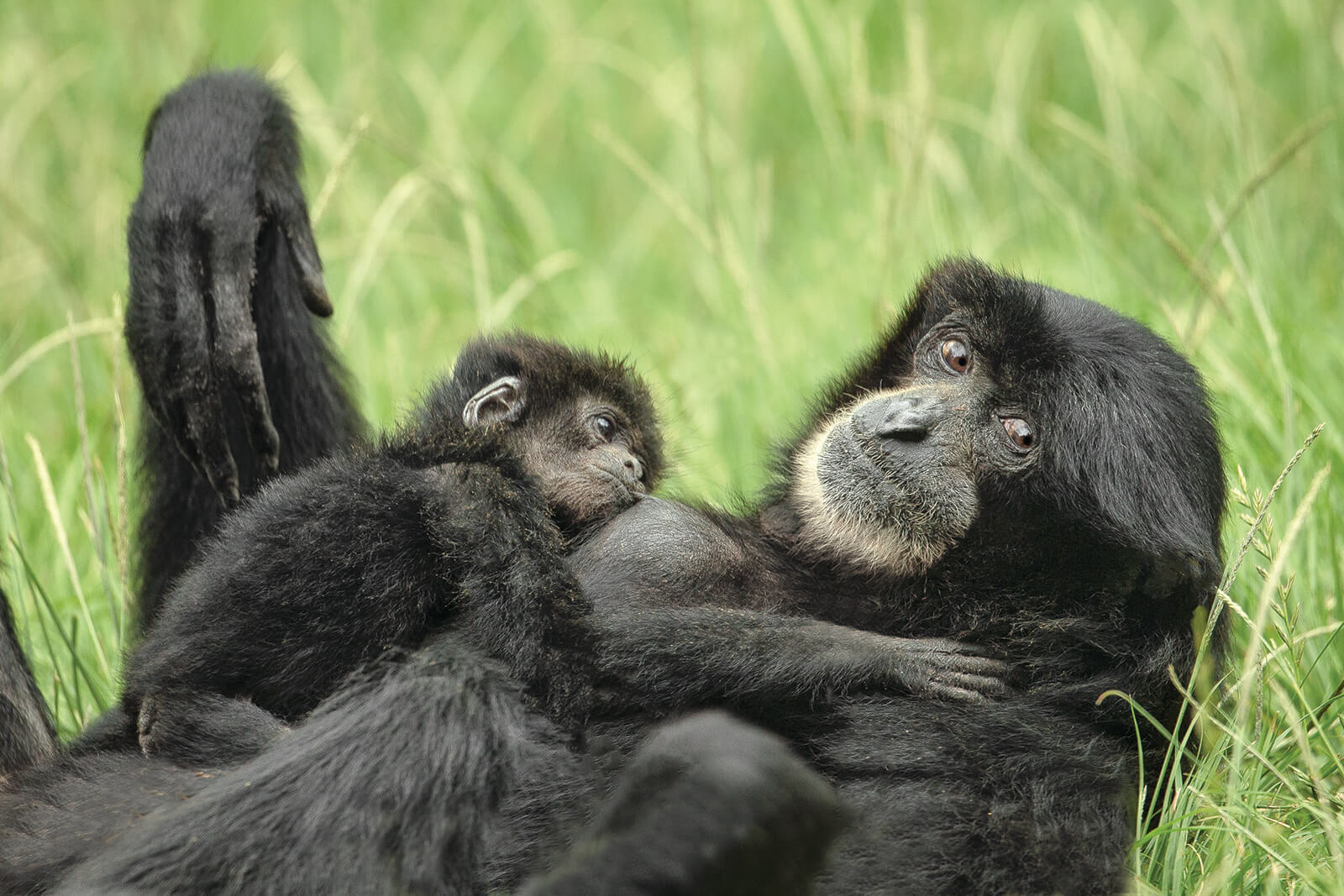
DAY CARE PROVIDERS
For the first few months, mothers provide care for their infants. But by the end of the youngster’s first year, dad’s in charge.
Typically, it is several years before keepers and veterinary staff separate a young ape from its mother, even for a routine exam. But in this case, “We knew something wasn’t quite right,” says Tanya. The staff handled the infant temporarily for a quick checkup when she was just six days old, with Ellie there for support. They determined that the infant had been born prematurely, and was significantly smaller than a typical healthy newborn—only about 10 ounces, compared to a typical 19-ounce newborn siamang. The exam also showed signs that the infant’s spine might not be developing normally. “We had to mentally prepare ourselves that there was a strong chance she might not get better,” says Tanya.
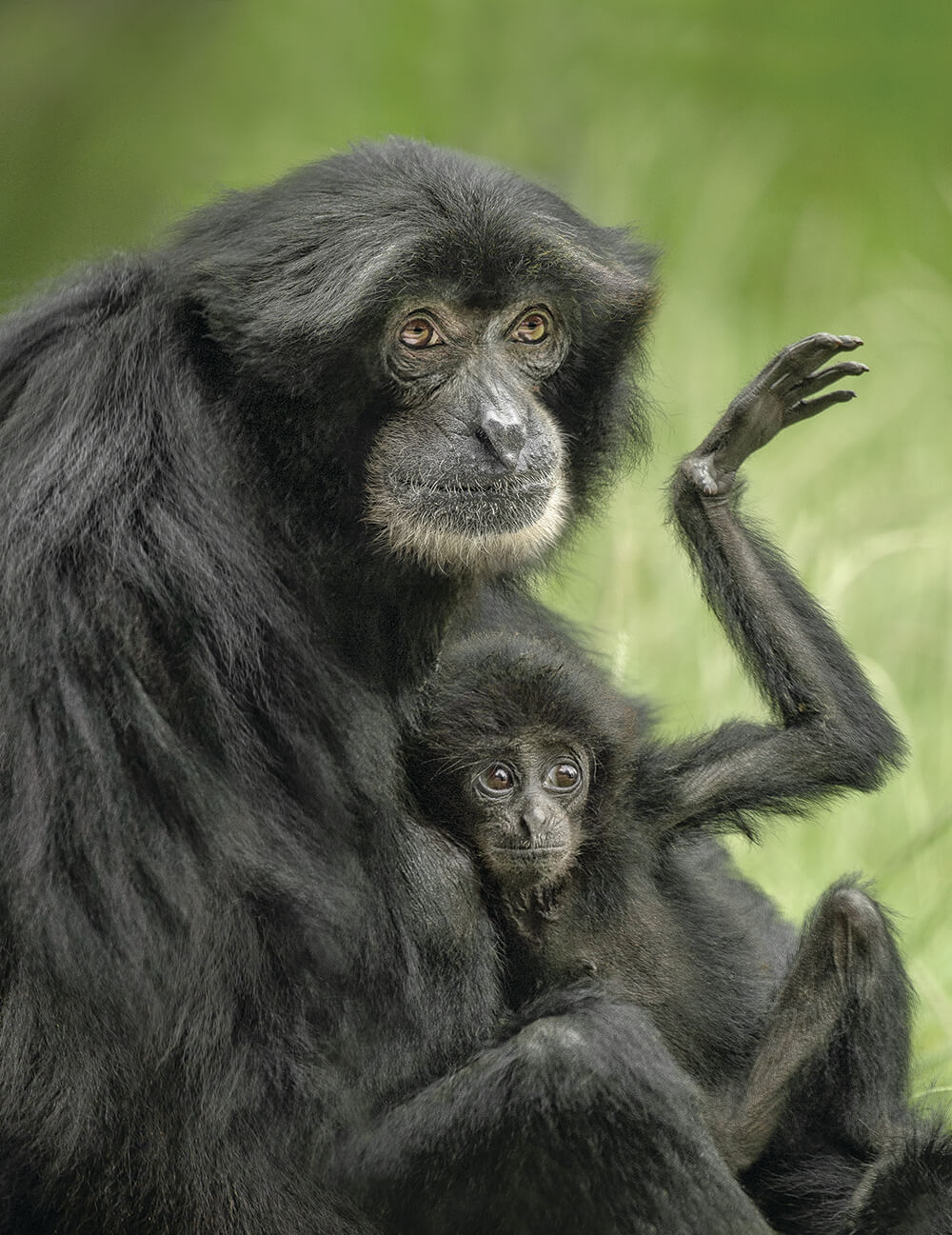
MAMA KNOWS BEST
Ellie is the best mom a young siamang could hope to have. She’s had lots of practice!
While Ellie carried and cuddled her infant 24 hours a day, veterinary staff stood by. They were concerned enough to check the infant again about two weeks later, but intervention wasn’t necessary. To everyone’s relief, any potential problems resolved as the infant developed. Everyone was thrilled to celebrate her two-month milestone, and then see her continue to grow into a strong, healthy youngster. They give all the credit to Ellie’s maternal skills. “It was all Ellie,” says Julie. Keepers named the infant Selamat, and affectionately call her Sela. The name is an especially appropriate Malay word: its most common meaning is “congratulations,” but a lesser-used definition is “survivor.”
Right now, Sela spends most of her time in Ellie’s arms—or nearby. Ellie still gets “a little anxious if she can’t see Sela,” says Tanya. But that is slowly changing. “A father siamang starts carrying his offspring at some point during the first year,” says Julie. “In the second year, fathers pretty much take over the care of their offspring.” Sela is also becoming more adventurous—and making friends.
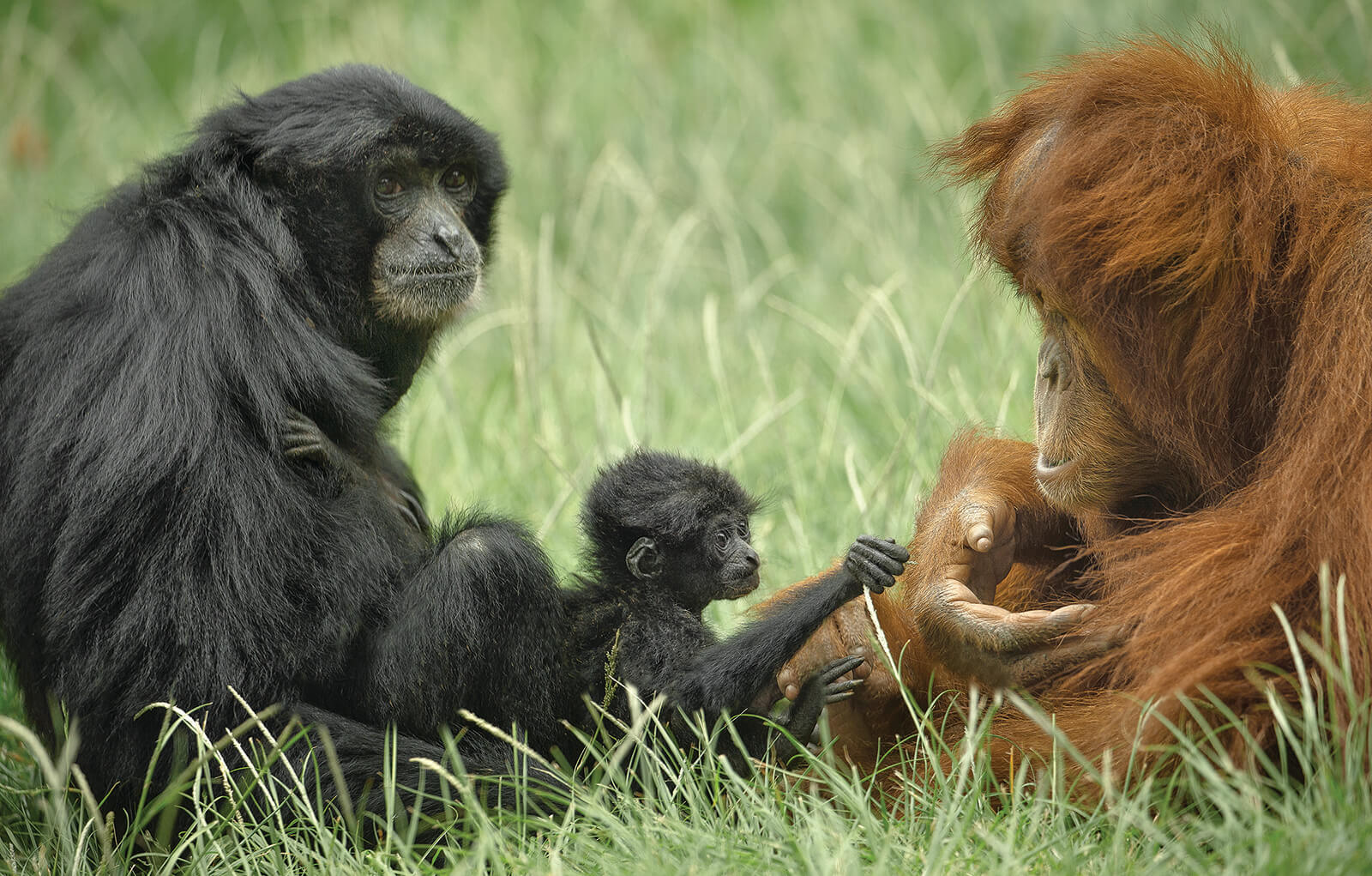
GETTING TO KNOW YOU
Sela seems just as enamored with Aisha as Aisha is with the infant siamang. At first, their relationship developed only under the watchful eye of protective mom Ellie.
She is the first siamang born at the Zoo in more than 10 years, so keepers weren’t sure how the much-larger orangutans that share their habitat would react. “They were really excited about the new baby,” says Tanya. And they have been gentle and respectful with the new arrival. “Ellie is usually fine with the orangutans coming close.” If their adoring gazes and gentle caresses get to be too much, “She just takes Sela and moves away.”

CAN YOU HEAR ME NOW?
A simang’s expandable throat sac amplifies its calls and songs—which can be heard throughout the Zoo each morning.
Six-year-old orangutan Aisha is especially captivated by Sela, and the admiration seems mutual. Aisha was somewhat of a preapproved playmate. “Unkie and Ellie have a really great relationship with Aisha,” says Tanya. “They have plenty of familiarity playing and wrestling with her, and she’s been completely appropriate in her behavior toward Sela.”
Unlike most other primates, male and female siamangs typically pair up as adults and often spend the rest of their lives together. Pairs establish and maintain their territories—and reinforce their bond—by singing. Each siamang pair creates a distinctive duet all its own. “The longer they are together, the more unique their song becomes,” says Tanya. Thanks to an inflatable throat sac, the resonant songs can be heard up to a mile away.
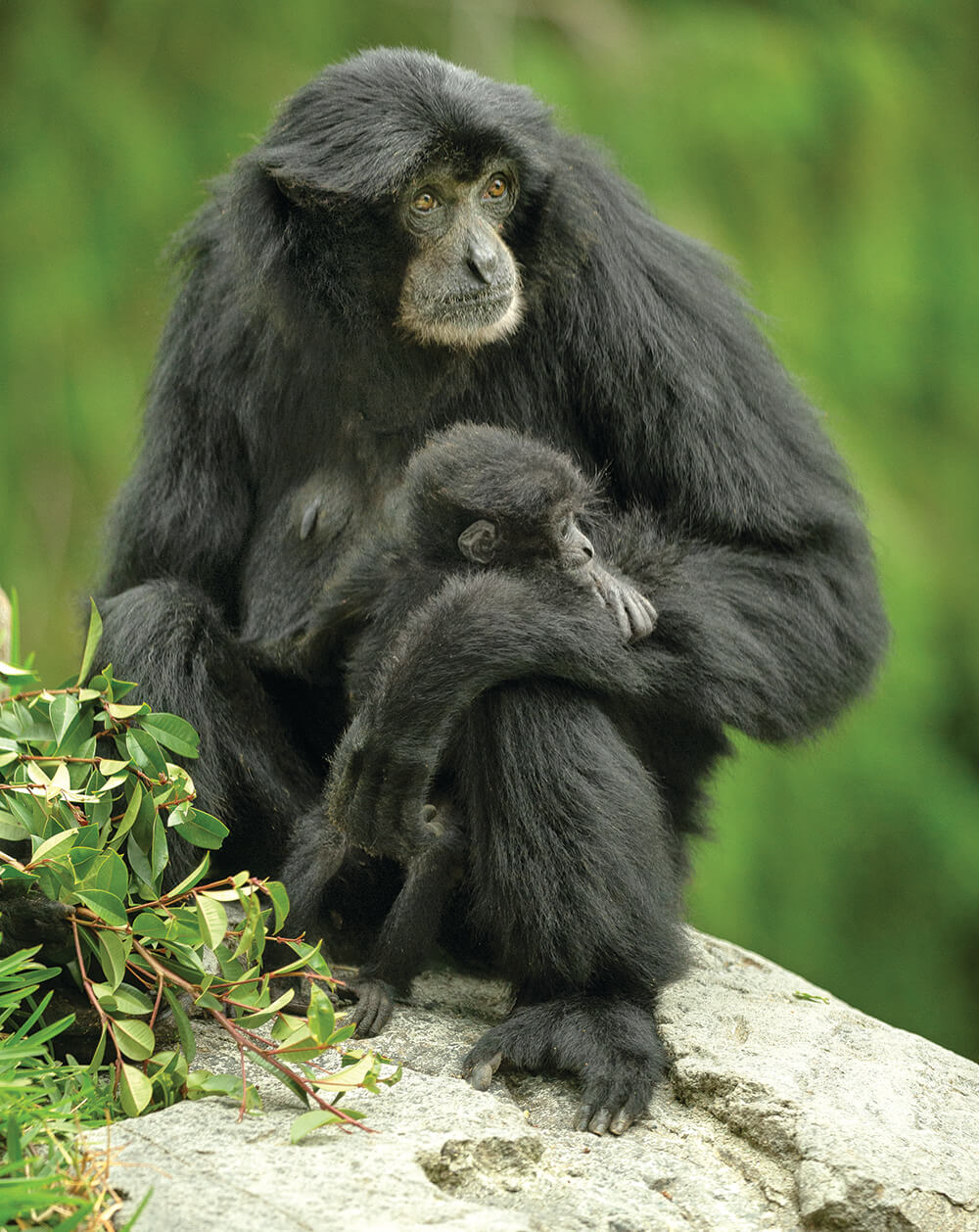
C’MON UP
One important infant developmental milestone—which Sela has already mastered—is “climbs up on mom.” Go girl!
Unkie and Ellie have been together since 1987, and their duet is particular to them. It’s something that Zoo regulars have come to expect and look forward to each morning. The pair’s bond is strong, too. Keepers say that before Sela was born, it wasn’t unusual to find them asleep in each other’s embrace in the morning. While Sela is the one that currently curls up with mom, her parents’ bond is as strong as ever. With parents like these, and a healthy infant, congratulations are in order all around.

